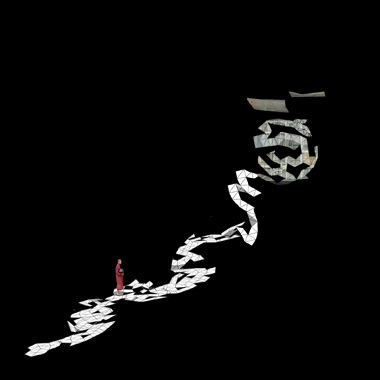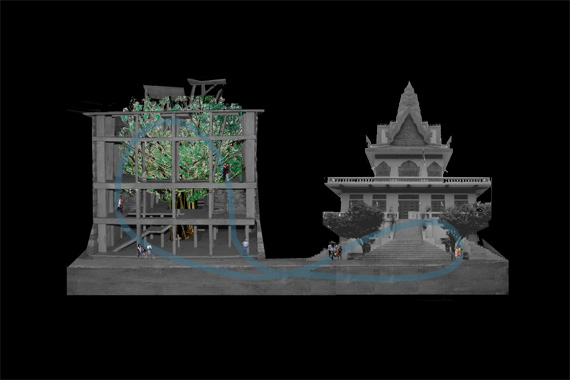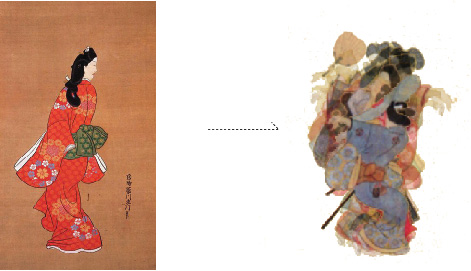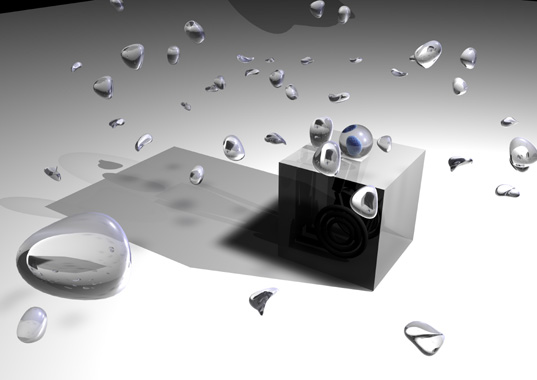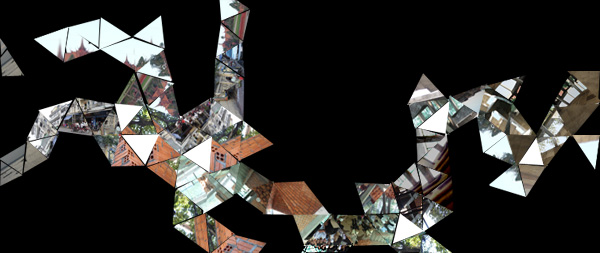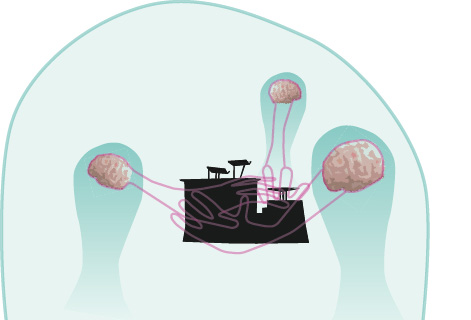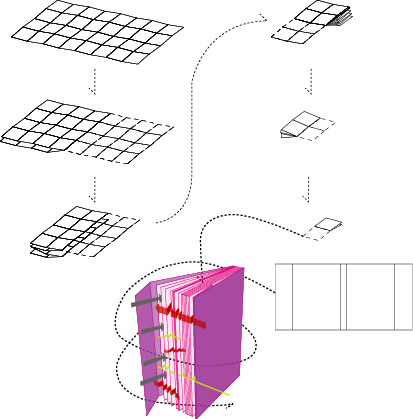|
|
||||
|
|
||||
|
|
||||
|
I N D E X
|
|
> Hiroshima House in Phnompenh
| |
|
from Phnompenh Ā@ | |
|---|---|
|
Modern Nou Theater in Hiroshima House : Taishi WATANABE
| |
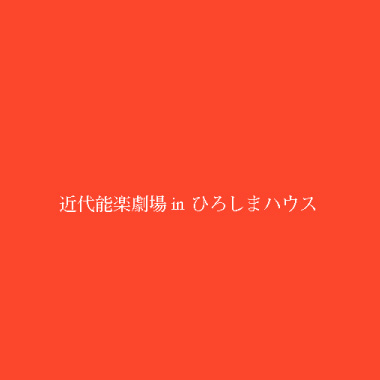
-Whirling Nou theater and the super-individualised subliminal theater
1. Woven three-dimentionally and whirl round.
| |
|
1. Woven three-dimentionally and whirl round.
A map of consciousness builds as one tours. Obviously, no two of them alike. As walking along distance, the map of consciousness appears as dimension and it whirls around to construct a space. This means consciousness creates a space. Inside the Hiroshima House, one whirls upwards again to reach Buddha’s foot front. |
|
|
2. Design of consciousness (a pilgrim), not the shape of stage. Nou Masks, Tabi.
The one that draws spiral is not the stage device but the movement of pilgrims. Faces are covered in masks. The wonderland is like Kaonashi from the movie “Spirited Away”, bodies are abstracted and only consciousness appears to be bare. Like Kaonashi has no feet, people in the world will be disconnected from reality; the ground. And it can be described as cicada in the sky that disappears in an instance. The Masks and Tabi are the very devices to take bodies of pilgrims away from real. |
|
|
3. Boring ordinary life to a little journey
In historical sense, Japanese did not know the notion of perspective until they study European modern architecture imported after the Meiji restoration. Hokusai and other famous intellects in Edo era certainly knew all these but we were originally out of the world of perspective. However, Moronobu Hishikawa had achieved to plant a 3dimensional image of a woman glancing back with a flat painting of “mikaeri bijin” (literally meaning “beauty looking back”). This is the origin related to Japanese animation today. |
|
|
4. Model which consciousness disconnected from body feels.
Kiesler’s ‘Endless House’ is like a egg-shaped dome but there is no need for architecture itself to become spherical. It is just that there was no greater technology than the one Kiesler used to translate his words to an image in his time. |
|
|
5. A map of consciousness
Map is essential for traveling. Map is namely the world itself. In Buddhism, it marks Mandala. However, the map of consciousness cannot grasp the whole. Like “Face Mandala” by Katuhiro Yamaguchi, one can only experience the space by reliving each scenes. |
|
|
6. The two totally unrelated stories
|
|
As making the Opening Ceremony “whirling No Theater” at Hiroshima House a material, the totally different theater “super-individualised subliminal theater” will be for real. It is a virtual theater that is reorganized by the memories of each pilgrim. It is what it touches more to the conciousness of other people so that number of theater exist will be the same as the number of pilgrims. The world of consciousness itself which a pilgrim imagined is the drama stage(playground) and will become the second story as a stranger watches it through the Internet. |
|
 |
|
|
7. No ending, no beginning
|
|
One piece of cover wraps round a book. When one removed from the book and opened it up, he can see a story that is drawn in 5 different scenes. The story that had been wrapped round is also one that was drawn on large piece of paper and folded many times. This one piece of scroll wraps round a book softly and then interferes inside to create a space which has no beginning nor the ending. Nou theater is like an endless space which describes the blending of one personal story with another. |
|
|
INDEX | |
